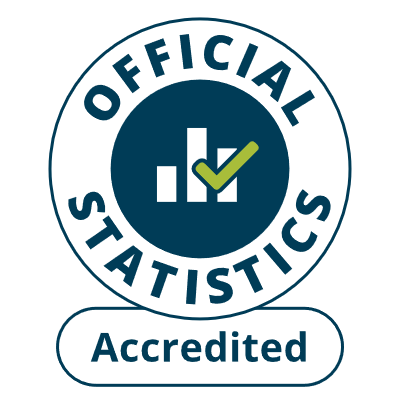
 Employee jobs in tourism-related industries by area, work pattern and gender
Employee jobs in tourism-related industries by area, work pattern and gender
Archived (English only) – No longer updated.
None
|
||||||||||||||||||||||||||||||||||||||||||||||||||||||||||||||||||||||||||||||||||||||||||||||||||||||||||||||||||||||||||||||||||||||||||||||||||||||||||||||||||||||||||||||||||||||||||||||||||||||||||||||||||||||||||||||||||||||||||||||||||||||||||||||||||||||||||||||
Metadata
Econ0003: Employee jobs in tourism-related industries by gender and pattern of work
ETES3, Welsh Assembly Government
Last update: 16 Dec 2009
Was added to StatsWales: 21 Dec 2009
Next Update: No longer updated.
Will be added to StatsWales by: Dec 2010
Source: Annual Business Inquiry, Office for National Statistics
Contact: economic.stats@wales.gsi.gov.uk
These data are counts of full and part time civilian jobs of employees in tourism-related industries, by gender, paid by employers who run a Pay-As-You-Earn scheme and/or are registered for VAT.
The definition of 'tourism-related industries' is that adopted by the Office for National Statistics in 'Labour Market Trends', namely Standard Industrial Classification (SIC) groups 551 to 554, 633 and 925 to 927. It includes, for example, employee jobs in hotels, restaurants, bars, libraries, museums and sport and other recreation activities.
The self-employed, HM forces, homeworkers and private servants are excluded.
The 2006 ABI results are subject to a number of discontinuities with an overall downward impact compared to results for previous years. Details can be found via the following link: https://www.nomisweb.co.uk/articles/news/files/ABI%202006%20discontinuities.doc. It is not possible to provide an estimate for the scale of the discontinuity in Wales.
The figures are taken from the Annual Business Inquiry (ABI) run by the Office for National Statistics (ONS). As the results come from a survey, the results are sample-based estimates and therefore subject to differing degrees of sampling variability, i.e. the true value for any measure lies in a differing range about the estimated value. This range or sampling variability increases as the detail in the data increases, for example individual industry data are subject to higher variability than the all industries data.
The data themselves are to be found on the National On-line Manpower Information System (or NOMIS - see www.nomisweb.co.uk). The NOMIS system provides the local authority data on two bases, one using frozen boundaries and one using current boundaries. The former is often used to exclude the effect of boundary changes in time series analysis, and is the dataset that the NOMIS system tends to lead with. The latter is used to provide figures which show the data according to the exact boundaries in each of the years given. Data on both bases are available within this dataset.
Figures are rounded to the nearest 100 and so there may be some apparent slight discrepancies between the sum of constituent items and the totals as shown. Some data are suppressed for disclosure reasons.
Was added to StatsWales: 21 Dec 2009
Next Update: No longer updated.
Will be added to StatsWales by: Dec 2010
Source: Annual Business Inquiry, Office for National Statistics
Contact: economic.stats@wales.gsi.gov.uk
These data are counts of full and part time civilian jobs of employees in tourism-related industries, by gender, paid by employers who run a Pay-As-You-Earn scheme and/or are registered for VAT.
The definition of 'tourism-related industries' is that adopted by the Office for National Statistics in 'Labour Market Trends', namely Standard Industrial Classification (SIC) groups 551 to 554, 633 and 925 to 927. It includes, for example, employee jobs in hotels, restaurants, bars, libraries, museums and sport and other recreation activities.
The self-employed, HM forces, homeworkers and private servants are excluded.
The 2006 ABI results are subject to a number of discontinuities with an overall downward impact compared to results for previous years. Details can be found via the following link: https://www.nomisweb.co.uk/articles/news/files/ABI%202006%20discontinuities.doc. It is not possible to provide an estimate for the scale of the discontinuity in Wales.
The figures are taken from the Annual Business Inquiry (ABI) run by the Office for National Statistics (ONS). As the results come from a survey, the results are sample-based estimates and therefore subject to differing degrees of sampling variability, i.e. the true value for any measure lies in a differing range about the estimated value. This range or sampling variability increases as the detail in the data increases, for example individual industry data are subject to higher variability than the all industries data.
The data themselves are to be found on the National On-line Manpower Information System (or NOMIS - see www.nomisweb.co.uk). The NOMIS system provides the local authority data on two bases, one using frozen boundaries and one using current boundaries. The former is often used to exclude the effect of boundary changes in time series analysis, and is the dataset that the NOMIS system tends to lead with. The latter is used to provide figures which show the data according to the exact boundaries in each of the years given. Data on both bases are available within this dataset.
Figures are rounded to the nearest 100 and so there may be some apparent slight discrepancies between the sum of constituent items and the totals as shown. Some data are suppressed for disclosure reasons.
Tourism







 All
All